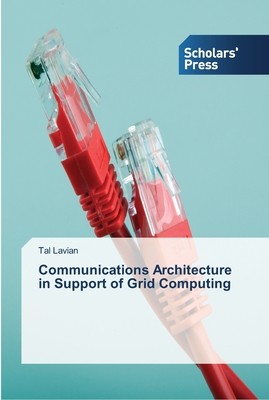
- We will send in 10–14 business days.
- Author: Tal Lavian
- Publisher: Scholars' Press
- ISBN-10: 3639510984
- ISBN-13: 9783639510980
- Format: 15.2 x 22.9 x 1.3 cm, softcover
- Language: English
- SAVE -10% with code: EXTRA
Communications Architecture in Support of Grid Computing (e-book) (used book) | bookbook.eu
Reviews
Description
The practice of science experienced a number of paradigm shifts in the 20th century, including the growth of large geographically dispersed teams and the use of simulations and computational science as a third branch, complementing theory and laboratory experiments. The recent exponential growth in network capacity, brought about by the rapid development of agile optical transport, is resulting in another such shift as the 21st century progresses. Essential to this new branch of e-Science applications is the capability of transferring immense amounts of data: dozens and hundreds of TeraBytes and even PetaBytes. The invention of the transistor in 1947 at Bell Labs was the triggering event that led to the technology revolution of the 20th century. Grid Computing has become the fundamental platform to conduct this e-Science research. Vast increases in data generation by e-Science applications, along with advances in computation, storage and communication, affect the nature of scientific research. During this decade, crossing the "Peta" line is expected: Petabyte in data size, Petaflop in CPU processing, and Petabit/s in network bandwidth.
EXTRA 10 % discount with code: EXTRA
The promotion ends in 20d.22:33:42
The discount code is valid when purchasing from 10 €. Discounts do not stack.
- Author: Tal Lavian
- Publisher: Scholars' Press
- ISBN-10: 3639510984
- ISBN-13: 9783639510980
- Format: 15.2 x 22.9 x 1.3 cm, softcover
- Language: English English
The practice of science experienced a number of paradigm shifts in the 20th century, including the growth of large geographically dispersed teams and the use of simulations and computational science as a third branch, complementing theory and laboratory experiments. The recent exponential growth in network capacity, brought about by the rapid development of agile optical transport, is resulting in another such shift as the 21st century progresses. Essential to this new branch of e-Science applications is the capability of transferring immense amounts of data: dozens and hundreds of TeraBytes and even PetaBytes. The invention of the transistor in 1947 at Bell Labs was the triggering event that led to the technology revolution of the 20th century. Grid Computing has become the fundamental platform to conduct this e-Science research. Vast increases in data generation by e-Science applications, along with advances in computation, storage and communication, affect the nature of scientific research. During this decade, crossing the "Peta" line is expected: Petabyte in data size, Petaflop in CPU processing, and Petabit/s in network bandwidth.


Reviews